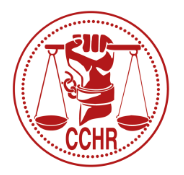Our environment today is not the same as it was 50 or 60 years ago. As technology rapidly advances to accommodate the fast paced society we live in, so does the departure from using the natural resources of the environment. Doing things the old fashioned way, which means slowly handmade, has been replaced by fast cookie cutter production in a factory. This is where the door opened to have chemicals all around everywhere. It’s in your lawn spray, fabric softeners, perfume, pesticides, synthetic carpets and in the preservatives to keep your food “fresh.” Is this necessarily a good thing?
Dr. Doris Rapp, who is Board Certified in Environmental Medicine, Pediatrics and Allergies is the author of the book titled, “Our Toxic World A Wake Up Call.” She says that chemicals damage our nervous systems causing learning and behavior problems. It would follow that a child could be misdiagnosed with ADHD and put on a dangerous mind-altering drug such as Ritalin when all that is needed is to find what chemical is causing the child’s behavior.
Many people are aware of many chemicals in the environment, but I wonder who would think that fluoride, widely known to be used to prevent tooth decay, has also been found to be detrimental. During his lifetime, Dr. Ben Feingold was Chief of Allergy at Kaiser Permanente Medical Center in San Francisco. He headed an organization to help hyperactive children. It was found that “fluoride causes a severe adverse reaction upon the nervous system of hyperactive children.” Again, misdiagnosis of ADHD could occur followed by a prescription of a dangerous mind-altering drug.
Wouldn’t it be wise to search your environment first to see what is causing your child’s behavior problems? Eliminating the cause would eliminate the symptoms and there would be no need to find any so-called mental illness.
Free Baker Act Help - Call Us: 800-782-2878
info@cchrflorida.org


0 Comments